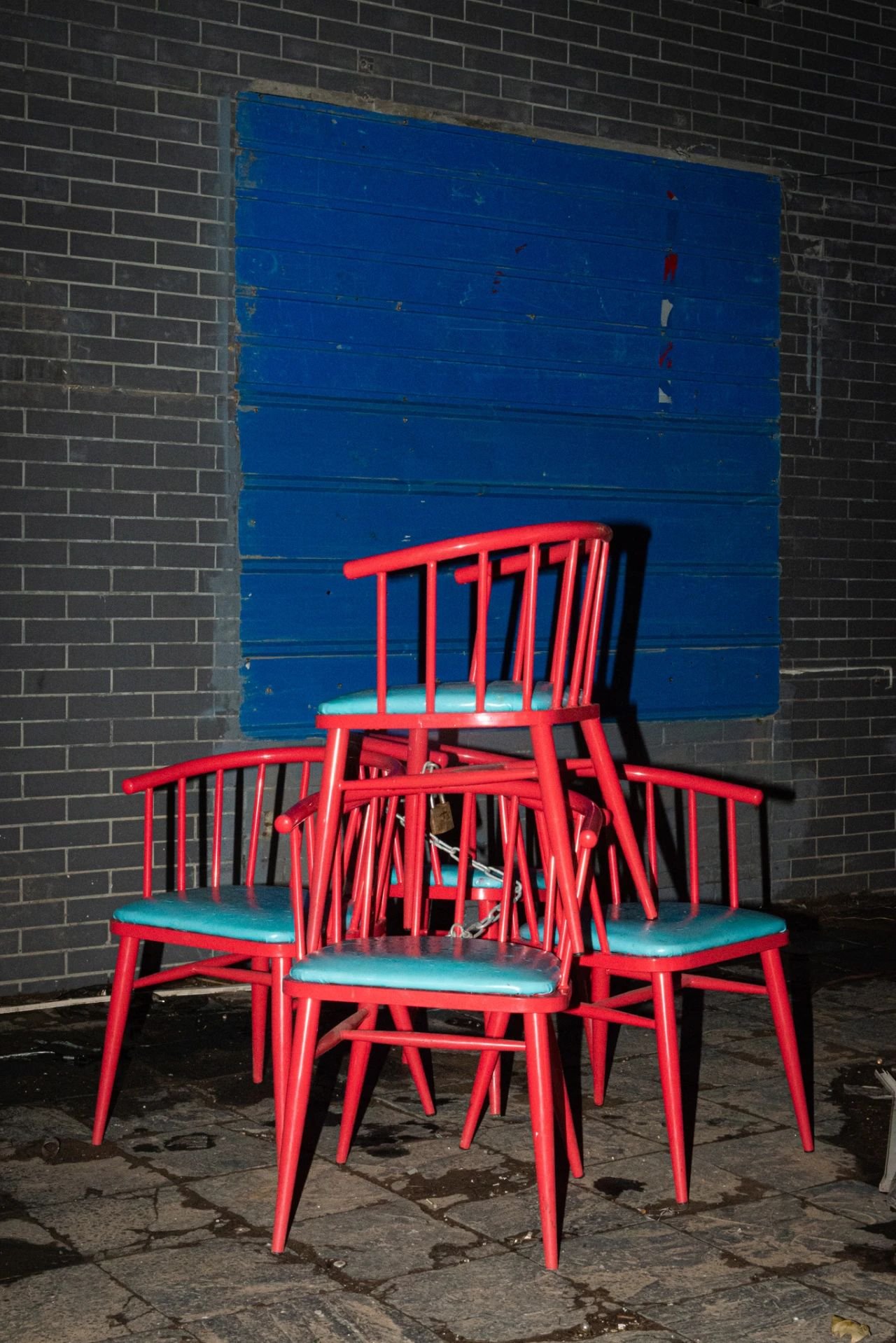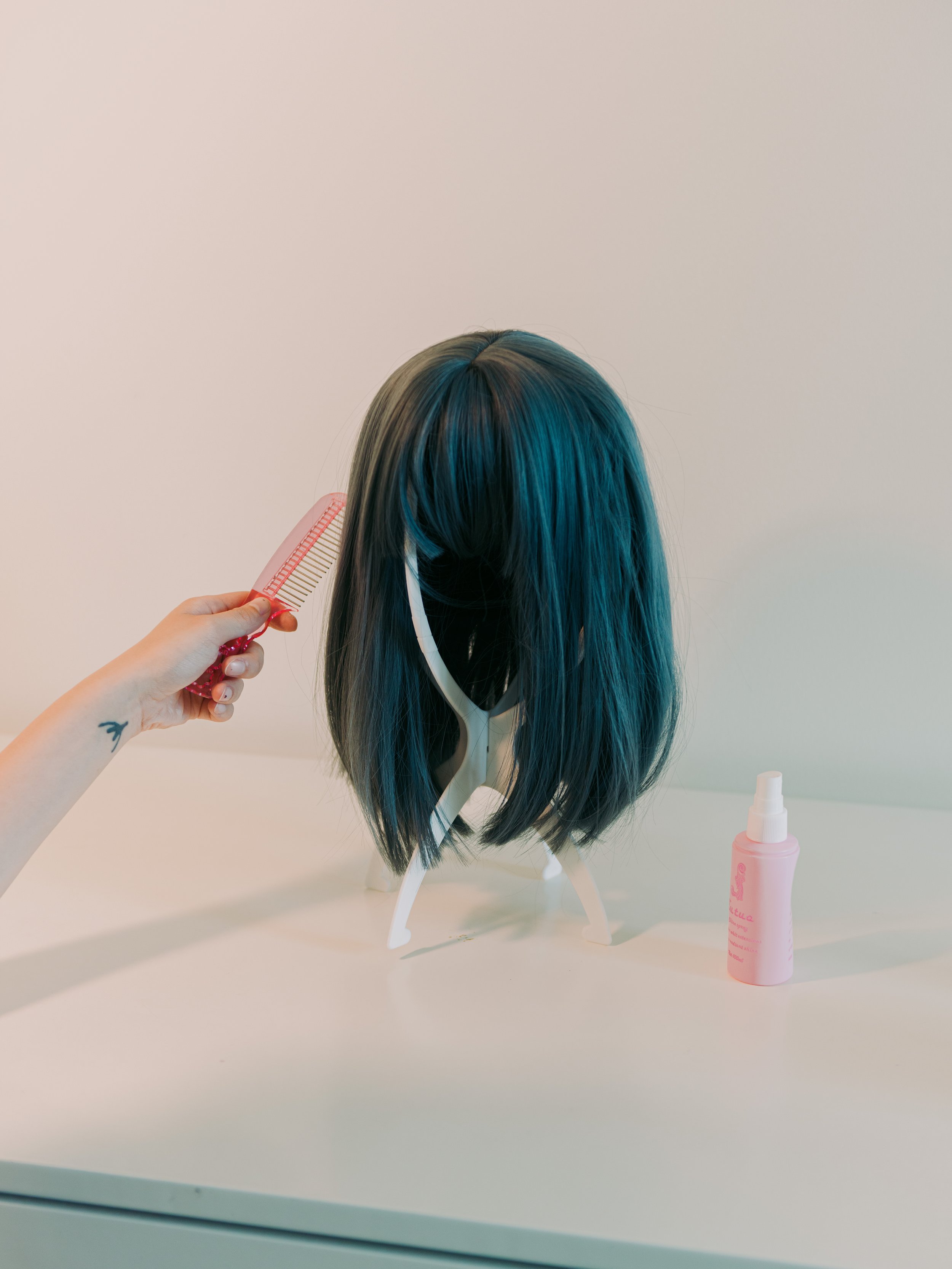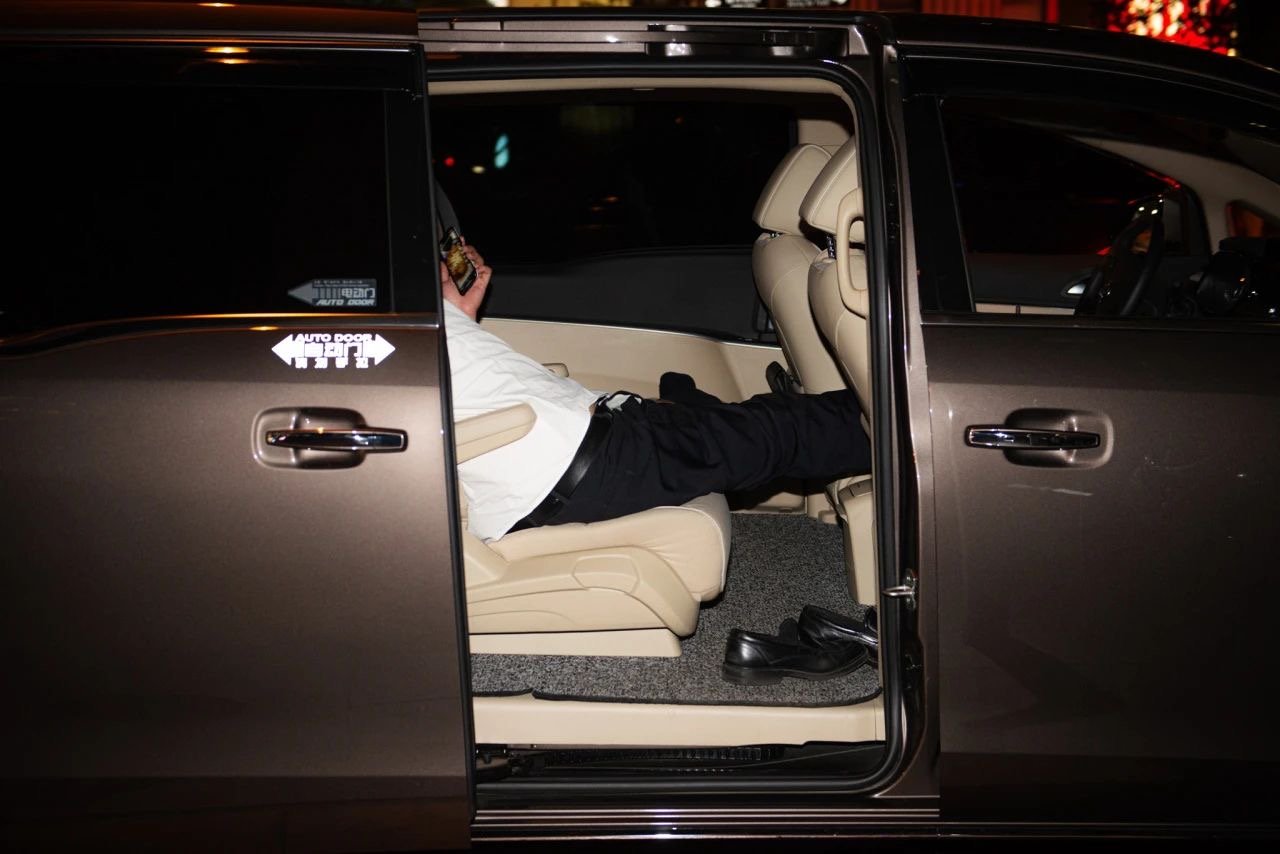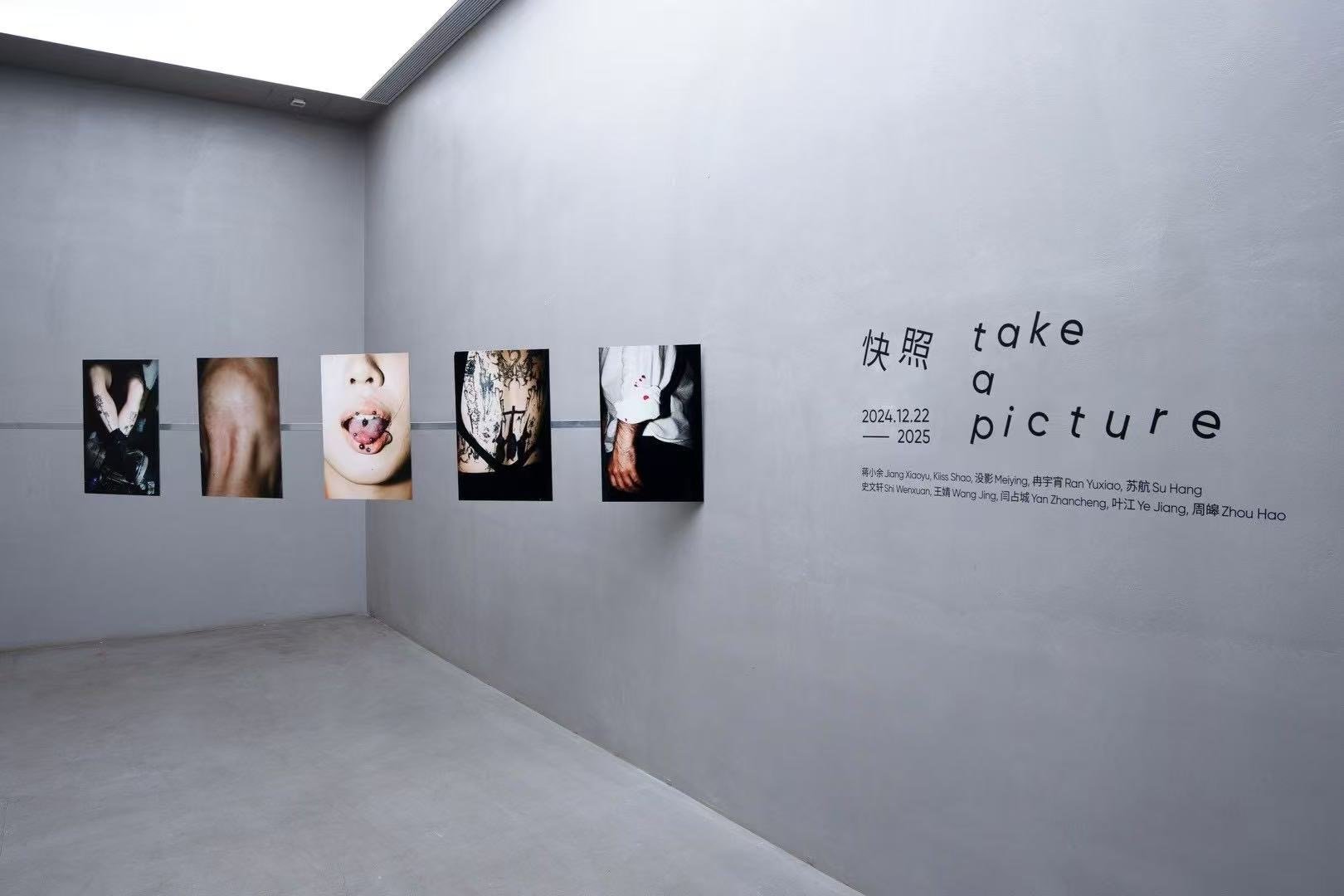Kiiss Shao
Kiiss Shao, born in Beijing in 2002, is a photographer and artist. If you’ve wandered through Beijing’s trendiest districts, particularly around the techno clubs, you’ve likely spotted Kiiss Shao graffitied all over the walls. Shao discreetly keeps his real name private, believing that sharing it signifies a deeper level of intimacy.
Kiiss Shao. Photo Courtesy: the artist.
Kiiss Shao. Photo Courtesy: the artist.
Kiiss Shao. Photo Courtesy: the artist.
I first met Shao when I was frequently raving and part-time bartending in Beijing. In the post-pandemic year of 2022, while clubs in the city remained closed due to lockdowns, weekly events would still pop up at various locations, drawing everyone together. It was during these gatherings that I began noticing Shao, camera in hand, capturing moments with his signature flash—reminiscent of Bruce Gilden’s style. The more I’ve gotten to know him, I find he is truly a modern-day flâneur.
Beijing Rave 2020-, 2022. Photo Courtesy: Kiiss Shao.
Sherry Wu: When did you decide to become an artist?
Kiiss Shao: It happened naturally. In 2020, during the pandemic, my girlfriend gave me a camera. With time on my hands, I started taking photos around places like Wudaoying and Andingmen (historical neighborhoods in Beijing). Eventually, I turned my lens toward clubgoers, realizing their importance as a subject. Over time, the body of work grew into a cohesive project.
Beijing Rave 2020-, 2022. Photo Courtesy: Kiiss Shao.
From 2020 onward (the pandemic and post-pandemic era), Shao spent three years immersing himself in Beijing’s techno music clubs, using photography as a creative medium to document the youth of the rave scene during this special time. His solo exhibition “Beijing Rave 2020-2023” in Shanghai is a compilation of these works. In a generation where social media defines standardized aesthetics and dance moves, these images propose an alternative narrative.
“Beijing Rave” Poster, 2024. Photo Courtesy: Kiiss Shao.
Initially, Shao went to clubs simply to listen to the music and DJs. Gradually, Shao realized that the community and youth around him deserved to be documented. We often see photographers documenting rock or punk performances. For example, in other countries, there are photographers or artists whose creative inspiration stems from electronic music, rave culture, subcultures, and youth. But in China today, there seem to be few such individuals. Shao began to wonder: could that person be him?
DJ at work with @Kiiss Shao graffiti, 2024. Photo Courtesy: Kiiss Shao.
SW: Do you have a favorite artist?
KS: I deeply admire Nan Goldin, Wolfgang Tillmans, and Alec Soth.
SW: Which gallery would you like to collaborate with?
KS: I hope to work with David Zwirner Gallery, partly because Wolfgang Tillmans is represented there, and it’s the pinnacle for me.
Every weekend, Shao would spend nearly all his time at clubs creating. Afterwards, he would share it on social media in order to broadcast his work to a broader audience. He believes being seen is essential. He would also send the photos to the people he captured, and over time, he ended up adding nearly everyone who frequented the clubs to his WeChat. When Shao went to clubs, people naturally greeted each other. Friends who rarely went to clubs and accompanied him there would jokingly say he was like a “celebrity” in that space.
Kiiss Shao. Photo Courtesy: the artist.
The group of people who frequently visit Beijing clubs is relatively stable. They include DJs, models, piercers, designers, vintage shop employees, and others. Using an internet term, most of them are “pretty subcultural” or 亚文化 (Yawenhua), which is a Chinese term for the aesthetic emerged out of retro and kitschy taste. Of course, Beijing clubs are very inclusive. There are no professional barriers or age restrictions for ravers. In clubs, Shao met educators, civil service workers, and even print shop employees. Many people who seemed unrelated to subcultures or electronic music were present in these scenes as well, reflecting the inclusivity of subcultures.
Beijing Rave 2020-, 2023. Photo Courtesy: Kiiss Shao.
SW: What’s your secret to creating?
KS: There’s no real secret. My setup is basic: a camera, a flash, and some touch-ups. Anyone can do it with enough passion and dedication.
In clubs, Shao often sees people hugging and kissing. Perhaps due to the influence of music and alcohol, everyone becomes more emotional and naturally expresses their feelings. He enjoys capturing these authentic moments because they are filled with emotion. When people get tired of dancing, they sit down to rest, chat about the music, their work, and life, and plan where to go next. Therefore, Shao’s works are heavily emotionally charged.
Beijing Rave 2020-, 2024. Photo Courtesy: Kiiss Shao.
SW: Do you rely on talent?
KS: Talent is important, but persistence and practice matter even more. Photography is rooted in reality, so constant effort and capturing moments are essential.
Shao does not have a traditional studio—his workspace is the streets and the world. Most of his club photography is digital. Sometimes he develops films in his kitchen. Shao also does not work on a schedule. He says: “Photography is not bound by rigid schedules like traditional office work. I shoot whenever inspiration strikes, whether outside or at home. It’s an unstoppable impulse; I’m always working.”
Beijing Rave 2020-, 2023. Photo Courtesy: Kiiss Shao.
Besides “Beijing Rave,” Shao is working on a project “China World Trade Center 2023-” and another project called “Beauty Duty” (Name to be determined).
‘Beauty Duty' is a term coined in Chinese meaning “serving beauty.” It reflects how societal pressures force people to strive for beauty standards at the expense of comfort or well-being, such as enduring painful beauty treatments. Beauty Duty (Name to be determined), 2023. Photo Courtesy: Kiiss Shao.
Beauty Duty (Name to be determined), 2023. Photo Courtesy: Kiiss Shao.
Beauty Duty (Name to be determined), 2023. Photo Courtesy: Kiiss Shao.
In “China World Trade Center 2023-” , Beijing CBD juxtaposes luxury brands and high consumerism with street vendors and working-class commuters. It’s a microcosm of social classes compressed into one area.
China World Trade Center 2023-, 2023. Photo Courtesy: Kiiss Shao.
China World Trade Center 2023-, 2023. Photo Courtesy: Kiiss Shao.
“Kiiss Shao Solo Exhibition” In Conversation with the Artist, SOLO Beijing, 2024. Photo Courtesy: Kiiss Shao.
“Take a Picture” Inner Flow Gallery, 2024. Photo Courtesy: Kiiss Shao.
“Take a Picture” Inner Flow Gallery, 2024. Photo Courtesy: Kiiss Shao.
Beijing Rave 2020-2023. Photo Courtesy: Kiiss Shao.
Special thanks to《三联人文城市》and《北京当代艺博会》for the interviews in Chinese with Kiiss Shao on behalf of MADE IN BED.
Sherry Wu (Yongyi)
Emerging Artist Co-Editor, MADE IN BED





















